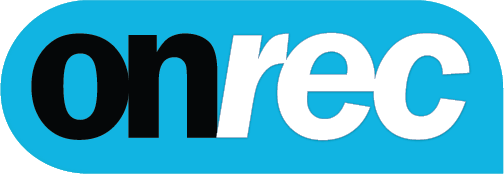By Jason Mitchell, Director of Global Training Support, Convergys Corporation
The frontline agent's job has become more complex. Convergys Corporation's Jason Mitchell offers his thoughts on why the traditional knowledge-based training approach is no longer adequate to ensure stellar performance and continuous improvement.
The job of a customer service, technical support or sales representative is complex and not getting any easier. In just minutes, the agent must address intricate customer needs and questions, exhibit detailed product or service knowledge and deploy strong service or selling skills - often using multiple tools and technologies. Add in the need for multilingual support and the shrinking labor pool of entry-level personnel, and you have the perfect storm impacting today's contact centers.
How do companies prepare new customer service agents to handle these increasing job responsibilities?
Today, most organizations follow the traditional knowledge-based learning (KBL) approach. Typical KBL curricula provide new employees with an orientation session, several weeks of new-hire training and a transition period where they receive a level of additional hands-on support. Then agents are pushed to the front lines where they are expected to deliver a superior service experience while attempting to upsell new services to the customer base.
While these are all valuable tools and processes, they may not be enough. Agents are struggling to balance the demands of learning more complex product knowledge faster, building customer loyalty with a superior service experience, and hitting upsell targets - all in the context of a single phone call where their productivity is measured based on the length of the client interaction.
The following are the common drawbacks associated with KBL training materials and processes:
Periodic. Most contact center training is offered once, as part of the new-hire process. Although product and offering updates are communicated, regular, ongoing, formal training sessions as part of an agent development plan are rare.
Inconsistent. When the same work is supported from multiple locations, the curricula, processes, examples and exercises can vary significantly between locations. Even when a mandatory or standard curriculum is used, the local training delivery or facilitation staff often adds its own custom touches and modifications that they consider to be best practices. The resulting inconsistency can be exacerbated when dealing with centers in multiple countries supporting the same customer base or line of business.
Ineffective. Curricula are often designed without a valid adult learning methodology. When that occurs, the level of knowledge retention will be abysmally low among learners, resulting in poor call quality, lowered customer satisfaction and lackluster agent performance.
Outdated. Contact center curricula are often old and outdated, not keeping up with the changing support technologies and the most likely customer queries. Most of the training is done in a classroom with one-way communication from the instructor to the students. It often does not leverage hands-on simulations, Web-based learning and on-demand resources that align to the types of methods that prospective agents are accustomed to. This can often lead to frustration among learners when they reach the floor and quickly realize that much of their education was not relevant.
Not relevant to the job. Most training curricula are organized by topic (product, customer service, agent tools), not task (resolving complaint x). This knowledge-based approach relies on the same method taken in school - chapter-by-chapter learning. After two, three, four or more weeks of training, learners find it hard to tie together relevant topics.
The Impact of Inefficient and Ineffective Training Inefficient, ineffective training translates to agents who are not ready to do their jobs. They become frustrated, and employee turnover increases, leading to higher costs in training and in ongoing contact center operations.
Consider the impact, blow by blow
First, the learning curve for new hires will be significantly longer than it should be. As agents enter either the transition period or the regular workforce, they will struggle to balance the numerous complex tasks required of them. The more traditional KBL training approach does not include those practicing techniques that have proven successful for the current top performers. The new agent may encounter customer inquiries, that - despite being among the top call types or inquiries - were not discussed during the training they received. The result will be a prolonged learning curve that pulls down the overall performance of the contact center, resulting in longer call times, fewer overall calls handled, lower first call resolution, and lower customer satisfaction ratings.
Second, there will be missed or reduced sales conversions in programs with cross-sell or up-sell expectations. Successful cross- and up-selling is a skill that requires in-depth knowledge of the product or service offering, knowledge of the alternate market options, and an ability to build rapport and trust with the consumer. Unless the company is fortunate enough to find a natural salesperson during the recruiting process, the likelihood of a new agent being effective at cross- and up-selling within the first 30-60 days will be greatly reduced with knowledge-based training. Missed cross- and up-selling opportunities result in lower revenue for the organization, negatively impacting the bottom line.
Third, poor training can lead to low levels of employee job satisfaction. As evidenced time and again in exit interviews and employee satisfaction surveys, insufficient training is a frequent cause of attrition and job dissatisfaction. Simply put, the less that people feel prepared to do their job, the more likely they will be to walk out the door. Rather than attack the problem at the source - training - some organizations become mired in an endless cycle of agent turnover, hiring more backfill employees only to put them through the same ineffective training.
A Better Alternative
More training is not the answer. Senior management wants results - an ever shorter learning curve and a quicker return on the investment in training dollars. Companies must train and work smarter, better, and faster than ever before. The traditional KBL approach is too costly, takes too long, and often does not produce the results companies expect.
Performance-based learning (PBL) is a new approach that's gaining ground. In a PBL approach, agents learn by doing a task (performance) rather than reading about it or hearing someone speak about it. The hallmarks of PBL are targeted curricula, e-learning and advanced delivery technologies that provide agents with realistic training that is up-to-date and ongoing.
The PBL approach connects knowledge to real-world contact center performance, with a curriculum and a classroom environment that are more engaging for the students. The curriculum blends different learning delivery methods, including instructor-led training, e-learning, simulations, role-plays and performance support systems. During PBL training sessions, students use and learn skills that are needed to ensure their success on the job. Through role-playing, students are quickly engaged in relevant job content and concepts, and the time-to-proficiency, or learning curve, is decreased dramatically.
A curriculum using PBL captures the best practices of the company's top-performing agents, so new-hires are learning the skills and techniques that are already proven successful in the real production environment. The result is a workforce that is trained from inception to use the skills and techniques that were developed by the tenured staff. With the use of role-plays and real-world examples based on top call drivers, PBL can put productive agents on the floor sooner.
Training as a Way of Life
Unlike most traditional training, PBL follows the agents throughout their lifecycle with continued reinforcement and learning support. This can be done through traditional instructor-led training sessions - or, more cost-effectively - by using advanced delivery technologies that send e-learning modules and assessments to the agent desktop. These new technologies enable the organization to schedule learning sessions or target training sessions for the downtime between calls. This point-of-need/time-of-need strategy allows for continued learning and reinforcement with updated materials, information and processes while not interrupting the overall operation.
PBL delivers real-world, reliable, effective training through a three-part performance enhancement strategy:
1. Enterprise performance is enhanced through the use of learning and performance programs based on current business drivers;
2. Business unit performance is improved when learning content and activities are based on actual job practices and requirements; and
3. Individual performance is increased through learning experiences that provide hands-on, realistic practice that reflect the actual performance environment.
The Next Step in the Evolution of Training The transition from the classroom to the real world of complex inquiries, multiple support systems, occasionally irate customers and complicated business metrics can be a rude awakening for a new agent. During the first weeks of training, the stage is being set for a long, mutually beneficial relationship between agent and employer, or conversely, for a quick stay before the agent is frustrated and moves on.
Preparing agents for this complex role requires a better approach to training. PBL can lead to improved operational performance, a happier and more confident workforce, and, ultimately, savings to the bottom line, objectives that all senior contact center management is under pressure to achieve.
Is Your Agent Training Process Evolving with the Role?

By Jason Mitchell, Director of Global Training Support, Convergys Corporation





